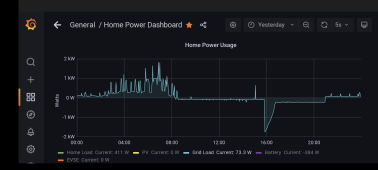400bird
Solar Wizard
I'm late to the party, so this may have already been said:Maximum Export (Sell) Sell Amps
Everytime I set that it immediately pushes that much energy into the grid. Even if it pulls it out of battery bank.
There is a voltage adjustment related to this export setting. So, when you are over this voltage level, the XW will invert DC to export AC at the max export amps setting.
I believe the idea behind this is to allow PV export after the battery is full. So, you'd set the voltage level where you want the MPPT to stop charging the battery and have solar energy go to the grid.
This allows a DC coupled, grid connected owner to have some benefits of net metering.
In short, check your settings, or the modbus commands you are sending.







